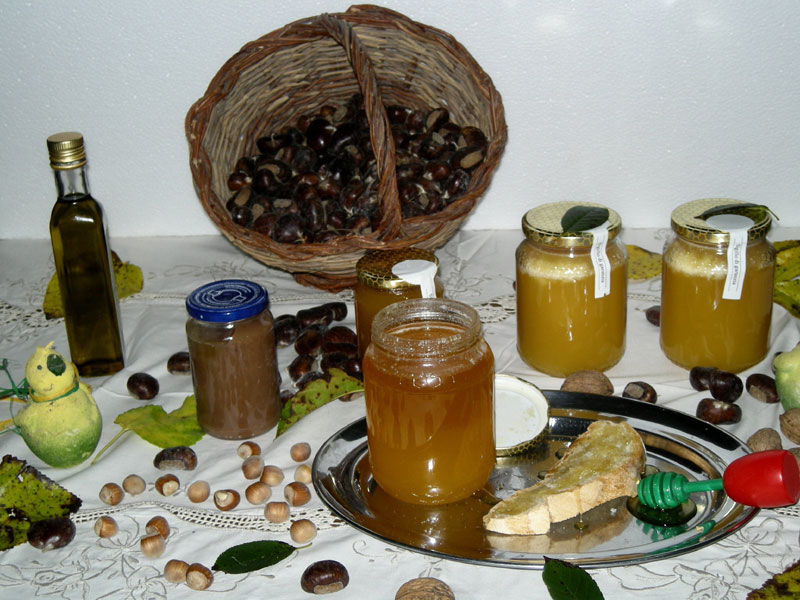Honey
The valley, hilly, and mountain landscape is characterized by a varied vegetation dominated by Mediterranean maquis, acacia and chestnut forests, very precious vegetal essences for bees. This fact, together with an ancient tradition and a low industrialization degree has created in the Park an ideal environment for a quality bee-keeping activity with a production characterized by acacia, mixed flower, and chestnut honey with excellent chemical-physical and organoleptic features.
The Italian word miele (honey) seems to derive from the Hittite word melit. For millennia it has represented the one and only available concentrated sugary food. The first traces of beehives built by men date back to the 6th millennium BC.
Honey was appreciated also in ancient Egypt, and the first documents of beekeepers who moved along the Nile to follow with their beehives the blooming of the plants date back to 4,000 years ago. During the excavation campaigns of the tombs of the Pharaohs, hermetically closed honey jars with a perfectly preserved content have been found. They also used it to treat digestive disorders and make ointments for sores and wounds.
Sumerians used it to make creams with clay, water, and cedar oil, while Babylonians used it to cook: small pancakes made with flour, sesame, dates, and honey were widespread.
The Greeks considered it "food of the Gods" and therefore it represented a very important element in the rites including votive offers. Homer described the gathering of wild honey, while Pythagoras recommended it as a food for a long life.
Honey is produced by bees from sugary substances they gather in nature.
The main supply sources are the nectar, which is produced by the flower plants (angiosperms), and honeydew, deriving from the lymph of the trees.
For the plants, the nectar is necessary to attract various pollinator insects in order to ensure the flower pollination. According to their anatomy, and in particular to the length of their proboscis, domestic bees can gather nectar only from some kinds of flowers, which are called melliferous.
The nectar composition varies according to the plants producing them. Anyway, they are mainly formed by glucide, like sucrose, glucose, fructose, and water.
Once it reaches the beehive, the bee pours the nectar out, rich in water, which must be dehydrated to ensure its preservation.
According to the Italian law, no addition can be made to honey, and the only treatments it can undergo are:
- extraction from the combs with centrifugal force
- decantation
- filtration
- guided crystallization
Sugars are present in variable quantities, with an average of 72%. Out of them, fructose and glucose go from about 70% in honeydew to almost 100% in some nectar honey. Except for a few cases, fructose is always the most represented sugar in honey. The presence of fructose not only gives honey a sweetening power higher than white sugar, but also a source of energy that our body can exploit longer. As a matter of fact, to be used, it must be transformed into glucose and, after, into glycogen, the "fuel" of our muscles. Therefore, honey is recommended to athletes before starting a physical activity, also thanks to the caloric supply of 3,200 Kcal/Kg.
Science confirms the efficacy of the ancient popular remedy to fight infections, being honey a real "antibiotic".
Eating honey to fight sore throat and mouth infections is a good help, since it has an anti-microbic and bactericide.







